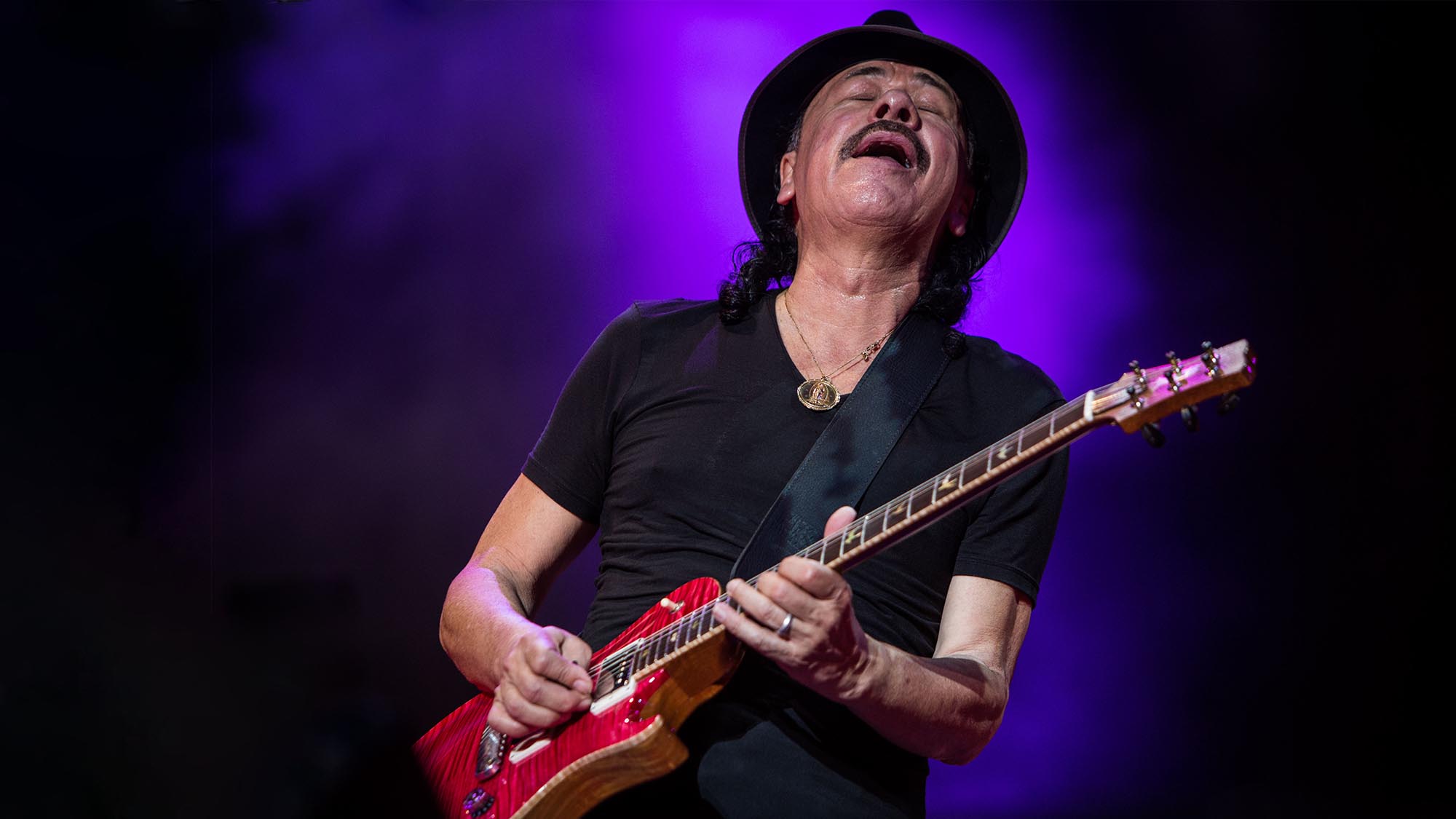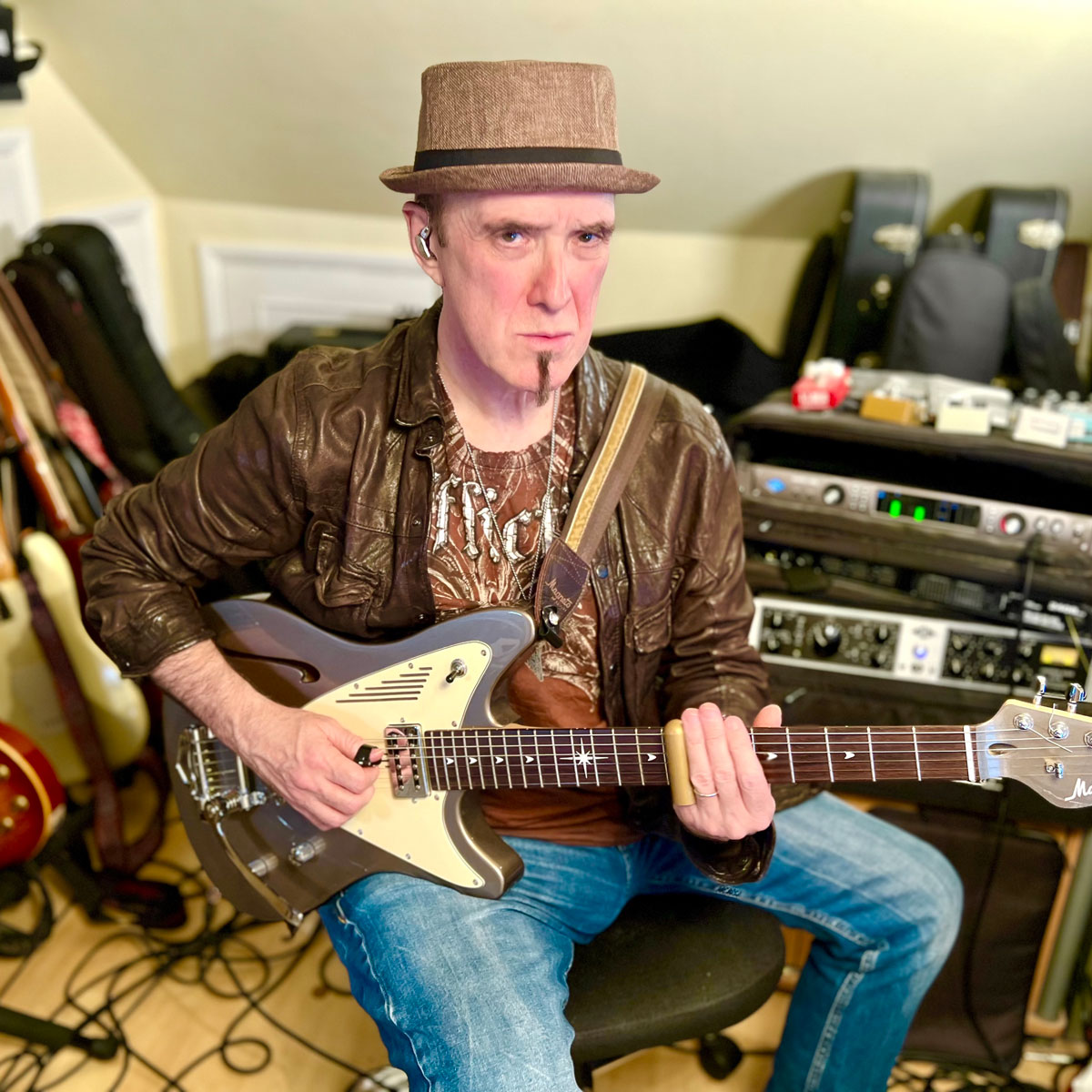Peter Green shaped his playing, John Lee Hooker enlisted his talents and Woodstock made him a guitar legend – nobody builds a blues solo like Carlos Santana
Ever since his Woodstock performance in '69, Santana has been one of the world's biggest guitar talents, with a melodic sensibility few can match. We go deep into his lead style

Carlos Santana came to prominence in the late ’60s and quickly pioneered a powerful blend of blues-rock and Latin influences. The appeal of this fusion continues to this day with an impressive career that continues to thrive.
Carlos is also a musical adventurer and even made an album with his longtime friend, jazz-rock pioneer John McLaughlin. Another notable collaboration was his appearance on John Lee Hooker’s comeback album, The Healer.
One of Carlos’ early influences was British blues great Peter Green. Green’s classy and vocal phrasing, combined with a detailed understanding of modern blues language made him a powerful example for a young player.
Many have tried to emulate Carlos’ distinctive approach, but to get a grasp of his style it’s important to have an understanding of minor key harmony. A casual listener might think that Carlos is playing out of the Aeolian (natural minor) scale with a little blues scale action mixed in. A closer look reveals a more sophisticated approach to minor key harmony.
Carlos has an unusually detailed method of addressing the V chord in the minor key, considering that he’s seen as a blues-rock kind of soloist. In a minor key, the V chord will generally have altered extensions, commonly a b9 and b13. In the key of A minor the V chord (E7) may have F and C notes in its voicings.
To fully observe the minor key harmony, the best way to create lines and chord voicings for E7 resolving to the tonic A minor in this key would be to use the notes of A harmonic minor starting on E. This creates a mode of A Harmonic Minor which is called E Phrygian dominant, as highlighted in example 1.
This mode is really useful in minor key tunes. One thing that’s interesting is that you can use the fifth mode of the tonic harmonic minor on the V chord, but it’s very common to play Dorian or Aeolian on the I chord when you get to it.
All the latest guitar news, interviews, lessons, reviews, deals and more, direct to your inbox!
In the examples and in the solo here, I mixed up various approaches on the A minor chords, even adding the blues scale with its b5, as Carlos often does with great style.
Santana is equally comfortable on uptempo Latin burn-ups and slow atmospheric tunes, and his sense of rhythm is also worthy of a mention. Santana solos always have a certain shape, drama and poetry to them, and it’s this pacing of his guitar breaks that are such a crucial part of their enduring appeal.
Get the tone
Amp Settings: Gain 8, Bass 6, Middle 4, Treble 7, Reverb 3
Carlos is known for using humbucker-equipped guitars and has been a long term PRS fan. More important is the relationship with the guitar amplifier. He has used various tube amps including Mesa/Boogie and Dumble, but the most important thing is to aim for a roaring lead sound but with the ability to clean up the tone by rolling back the volume knob.
You’ll need at least one drive pedal in front of a clean amp. Reverb is going to be essential and you might want a little delay. Several of Carlos’ classic solos feature a wah pedal, often in the ‘half cocked’ position.
Example 1
This example is based around the Aeolian mode (Natural Minor), whose 5th mode gives us E harmonic minor, the most appropriate scale for E7 in the key of A minor.
Example 2
This is a melodic line that waits until the second bar before we hear the G#, the major 3rd of E7, having already used the b9 (F) for a more moody colour.
Example 3
This is over the contrasting harmony on the IV chord (Dm7). It could be seen as an A Aeolian line but just as easily coming from D Dorian.
Example 4
Here’s a classic sextuplet-based Carlos idea using a repeated three-note motif but ending by running down the blues scale.
Example 5
This flowing blues line is played way up on the fretboard. Carlos really gets around the instrument and it’s great to explore the various registers of the guitar.
Example 6: The Solo
This final solo spans 20 bars and includes many of the topics previously discussed. Notice the use of A harmonic minor/E Phrygian dominant in bars 2 and 3 while the cascading line in bar 8 is nice for both your hands and ears.
The blues rock repetitive bends in bar 13 are fun and the speedy descending and ascending line in bars 14-15 is particularly ear catching. The repetitive high C and B notes are typical Santana terrain. Enjoy!
A professional guitarist for many years, Andy G Jones has played with Van Morrison, James Ingram, Lamont Dozier, Queen (Brian May and Roger Taylor), Robben Ford, Billy Cobham, John Illsley (Dire Straits), KT Tunstall, Albert Lee (featured on Andy's upcoming CD), Mike Finnigan, Dave Landreth and Ryan Voth from The Bros. Landreth, Malford Milligan, The BBC Radio Big Band, Patti Austin, Hamish Stuart (Average White Band), Lalo Schifrin (Hollywood film composer Bullitt, Mission Impossible), Hank Marvin, James Dean Bradfield (the Manic Street Preachers), Grady Tate, Agnetha from ABBA, Cliff Richard, Dudley Moore, Nathan James (Inglorious), Joey Tempest (Europe) and Kelsey Grammar.



